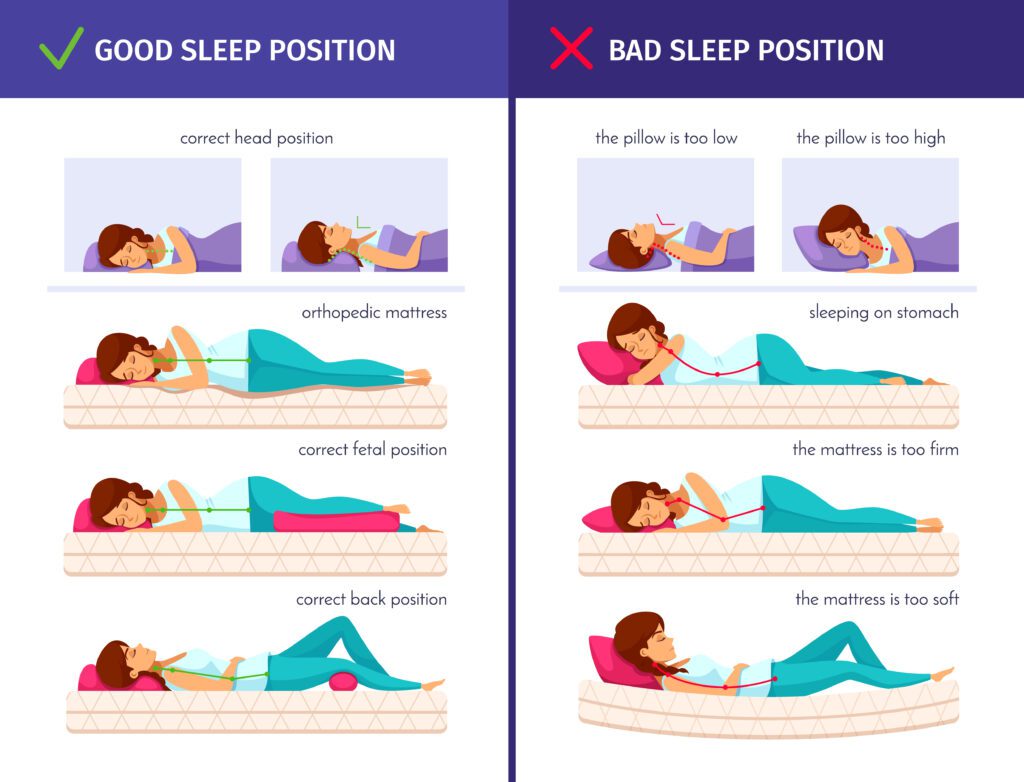Which Sleep Position Is Best for Heart Patients?
Table of Contents
Sleep plays a vital role in heart health. But if you or a loved one has a heart condition, you may wonder: Does the way you sleep affect your heart? The answer is yes—and choosing the right position can actually support better breathing, circulation, and overall well-being.
In this guide, we’ll gently walk through which sleep position is best for heart patients, why it matters, and how to adjust your habits without stress.
Why Sleep Position Matters for Heart Health

Your sleep position can either help or hinder your body’s ability to rest, especially when you’re managing a heart condition. It affects blood flow, breathing patterns, and even pressure on certain organs.
For heart patients, a good sleeping posture can mean more oxygen, less strain on the heart, and fewer symptoms like shortness of breath or discomfort.
According to the American Heart Association, sleep quality is directly connected to cardiovascular health—and small changes can make a big difference.
Left Side Sleeping: Often the Best Choice
Many doctors recommend sleeping on the left side as the most heart-friendly position.
Why left-side sleeping helps:
- Improves circulation: Blood returns more easily to the heart due to gravity.
- Reduces pressure on major vessels: Especially helpful for patients with congestive heart failure.
- Supports lymphatic drainage: Helps the body clear waste more efficiently during sleep.
- May reduce snoring or breathing issues in some individuals.

Note: While left-side sleeping is widely suggested, it may not suit everyone—especially if it causes shoulder pain or discomfort.
Right Side: An Acceptable Alternative
Some studies suggest that right-side sleeping could slightly compress the heart. But for many people, it’s still safe—especially if left-side sleeping isn’t comfortable.
Right-side sleeping may be suitable if:
- Left-side sleeping causes discomfort or shoulder pain
- You have certain types of heart arrhythmias
- You simply sleep better this way and aren’t experiencing symptoms
What matters most is comfort and breathing ease. If you’re not sure, talk to your cardiologist about what’s safest for your condition.
Sleep Positions to Avoid (If Possible)
1. Sleeping on your back
While it’s not harmful for everyone, back sleeping can:
- Make it harder to breathe (especially with sleep apnea)
- Cause the tongue to fall back, blocking airways
- Lead to acid reflux in some cases
2. Sleeping on your stomach
This is generally not recommended for heart patients:
- It puts strain on the neck and spine
- It can restrict chest movement and affect breathing

Tips to Adjust Your Sleep Position Gently
Changing how you sleep doesn’t happen overnight. But with the right tools and techniques, you can ease into a more heart-friendly posture.
Here’s how:
- Use a body pillow
Helps support side sleeping and prevents rolling onto your back or stomach. - Place a pillow behind your back
Acts as a barrier to discourage rolling during the night. - Choose a supportive mattress
Too-soft beds can cause misalignment. Aim for medium-firm comfort to support your side. - Keep your upper body slightly elevated
This can help with breathing and reduce pressure on the chest. - Practice during naps first
Train your body in short sessions before applying it to a full night.
Bonus: Supportive Sleep Habits for Heart Patients
Along with finding which sleep position is best for heart patients, it’s also smart to support your rest in other ways:
- Avoid heavy meals late at night
- Limit caffeine and alcohol in the evening
- Try deep breathing or relaxation before bed
- Keep a consistent sleep schedule
- Stay active during the day for better nighttime rest
According to Cleveland Clinic, people with heart conditions benefit from both sleep quality and quantity—so aim for 7–9 hours of rest each night.
When to Talk to Your Doctor
If you’re unsure which sleep position is best for your specific heart condition—or if you experience chest pain, shortness of breath, or frequent awakenings—consult your healthcare provider. They may also recommend a sleep study to rule out sleep apnea or other concerns.
Your body is unique, and so is your heart health.
Final Thoughts
For many heart patients, the best sleep position is on the left side, as it supports circulation and reduces pressure on the heart. But comfort matters too—so find what works best for your body, and ease into it gently. Over time, your heart (and your sleep) will thank you.
FAQ: Which Sleep Position Is Best for Heart Patients?
1. Is it bad to sleep on your back with a heart condition?
It depends. Some people do fine, but if you snore or have breathing issues, side sleeping is usually safer.
2. Why is the left side better than the right side for heart patients?
It improves circulation and reduces pressure on key blood vessels near the heart.
3. Can sleeping position affect blood pressure?
Yes, especially in people with sleep apnea or fluid retention. Side sleeping may help reduce pressure during the night.
4. What if I can’t stay on my side all night?
That’s okay. Try to start your night on your side and use pillows to help maintain the position. Even partial improvement counts.
5. Should heart patients use an elevated bed?
Sometimes, especially if breathing or acid reflux is an issue. A slightly elevated upper body can ease discomfort.